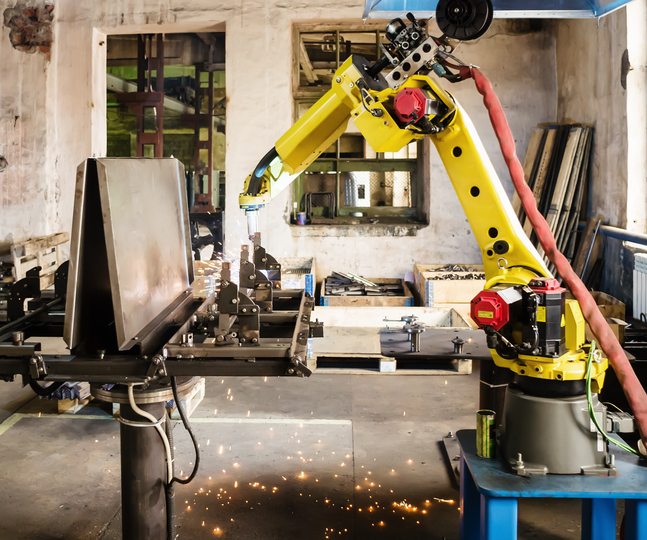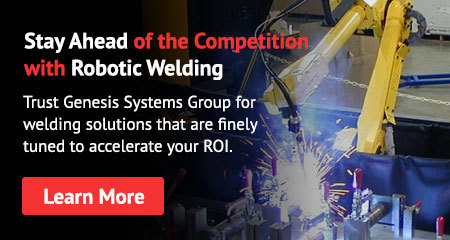Robotic MIG vs TIG Welding: Choosing the Right Robotic Welding for Your Application

Choosing the right type of welding for your robotic welding application is a critical decision. Not all types of robotic welding are equal, despite producing similar outcomes. Two of the most common types of robotic welding – metal inert gas (MIG) and tungsten inert gas (TIG) – are often seen as interchangeable, but this is far from the truth.
There’s a big difference between MIG and TIG welding, and the one you choose will be highly consequential to your application’s throughput and productivity.
Difference Between MIG and TIG Robotic Welding
MIG welding is a type of Gas Metal Arc Welding (GMAW) that uses a continuously feeding wire during the welding process. This wire acts as filler material to help join the two metal objects being welded together.
TIG welding is a type of Gas Tungsten Arc Welding (GTAW) that utilizes a non-consumable welding wire, or tungsten electrode. A current is run through the two materials being welded to heat and join them together. TIG welding may or may not use a filler material.
Choosing the Right Robotic Welding Type for Your Application
Your choice of MIG or TIG robotic welding processes will have a big impact on your application in terms of productivity and throughput. Choosing the wrong type could offset any benefits typically gained through robotic automation, so it’s important to know the strengths and weakness of both types of automated welding.
MIG welding is often used for large, thick weldments. It produces high-quality welds faster than TIG welding. MIG processes have low spatter, good weld bead appearance and can be used in any position. However, relative to TIG welding, MIG welding can be higher maintenance and only suited for applications with larger parts.
TIG welding is typically used for small parts where precision is required. It’s slower than MIG welding, but cleanup and maintenance is simpler. While TIG welding is usually preferred over MIG welding for small parts, TIG welding is versatile and can be used for a wide range of welding applications.
The differences between MIG and TIG welding make them suitable for different applications – MIG welding for larger parts and TIG welding for smaller parts, broadly speaking. Choosing the type of automated welding you’ll use for your application is an important decision. Using the right robotic welding processes can help maximize the benefits of robotic automation.
To learn more about implementing robotic MIG or TIG welding processes, browse our extensive selection of robotic welding case studies and get real-world examples of successful robotic welding automation integration.
Posted in Robotic Welding

Thank you for sharing. I really appreciate you, sharing your expertise in MIG and TIG Robotic Automation Welding